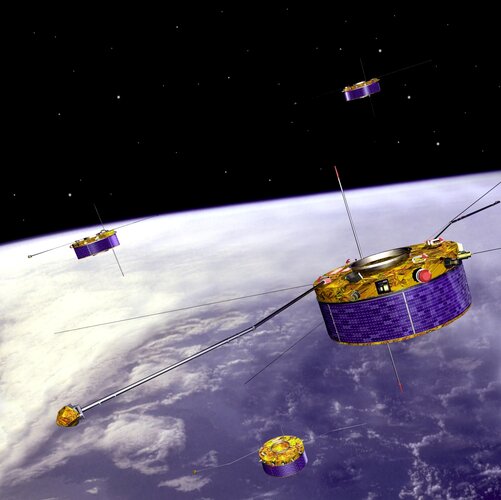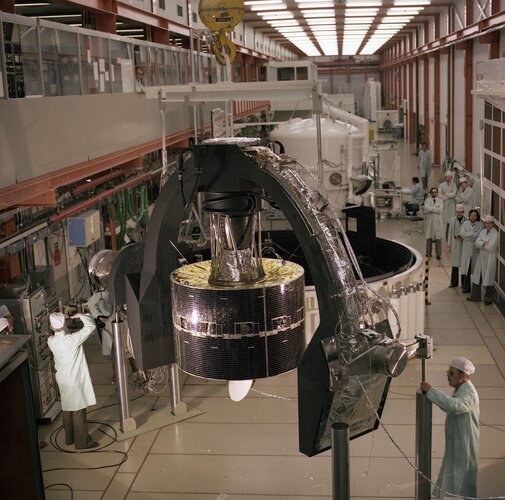
Copernical Team
Shenzhou 18 and 19 crews undertake intensive training for next missions
 Crew members selected for China's upcoming manned space missions, Shenzhou XVIII and Shenzhou XIV, are currently engaged in rigorous training programs, as revealed by Yang Liwei, a prominent figure in the nation's space endeavors. Liwei, who earned distinction as China's first astronaut and now plays a pivotal role in the planning of the manned space program, recently shared these insights on Ch
Crew members selected for China's upcoming manned space missions, Shenzhou XVIII and Shenzhou XIV, are currently engaged in rigorous training programs, as revealed by Yang Liwei, a prominent figure in the nation's space endeavors. Liwei, who earned distinction as China's first astronaut and now plays a pivotal role in the planning of the manned space program, recently shared these insights on Ch Revolutionizing Chemistry: Over 4 Billion Early-Life Reactions Simulated via Blockchain
 In a groundbreaking utilization of blockchain technology, a team of chemists has successfully repurposed the computational process typically used in cryptocurrency mining to simulate an unprecedented network of chemical reactions, potentially linked to the origins of life on Earth. This study, published in the journal Chem on January 24, marks a novel intersection of chemistry, computer science,
In a groundbreaking utilization of blockchain technology, a team of chemists has successfully repurposed the computational process typically used in cryptocurrency mining to simulate an unprecedented network of chemical reactions, potentially linked to the origins of life on Earth. This study, published in the journal Chem on January 24, marks a novel intersection of chemistry, computer science, Lucy gears up for a busy year on route to the Jupiter Trojans
 After its inaugural asteroid encounter last year, NASA's Lucy spacecraft is gearing up for pivotal events in 2024, marking significant progress in its journey to explore the enigmatic Jupiter Trojan asteroids. This ambitious mission, which seeks to unravel mysteries of the solar system's formation, is poised to enter a critical phase involving intricate deep space maneuvers and an Earth gravity
After its inaugural asteroid encounter last year, NASA's Lucy spacecraft is gearing up for pivotal events in 2024, marking significant progress in its journey to explore the enigmatic Jupiter Trojan asteroids. This ambitious mission, which seeks to unravel mysteries of the solar system's formation, is poised to enter a critical phase involving intricate deep space maneuvers and an Earth gravity ESA Astronaut Commands Robots in Space-to-Earth Avatar Experiment
SLIM deploys robots despite a bullseye upside down lunar landing
 Japan's Smart Lander for Investigating the Moon, or SLIM, landed on the moon Saturday about 180 feet, or little more than half a football field, away from its target landing spot, space officials said on Thursday.
The Japan Aerospace Exploration Agency said its landing technology allowed SLIM to land within 330 feet of the targeting landing location, calculating for obstacle avoidance m
Japan's Smart Lander for Investigating the Moon, or SLIM, landed on the moon Saturday about 180 feet, or little more than half a football field, away from its target landing spot, space officials said on Thursday.
The Japan Aerospace Exploration Agency said its landing technology allowed SLIM to land within 330 feet of the targeting landing location, calculating for obstacle avoidance m Salsa’s last dance targets reentry over South Pacific

Earth from Space: Snow-bound eastern US
 Image:
Record-breaking Arctic cold weather has swept through much of the United States in the last few weeks. The eastern part of the country was particularly affected with thick snow blanketing most of the region, as this Copernicus Sentinel-3 image shows.
Image:
Record-breaking Arctic cold weather has swept through much of the United States in the last few weeks. The eastern part of the country was particularly affected with thick snow blanketing most of the region, as this Copernicus Sentinel-3 image shows. Earth views from Cupola by Marcus Wandt
 Video:
00:01:25
Video:
00:01:25
Join ESA project astronaut Marcus Wandt inside the seven-windowed cupola, the International Space Station's "window to the world".
The ESA - European Space Agency-built Cupola is the favourite place of many astronauts on the International Space Station. It serves not only as a unique photo spot, but also for observing robotic activities of the Canadian Space Agency's robotic arm Canadarm2, arriving spacecraft and spacewalks.
Marcus was launched to the International Space Station on the Dragon spacecraft as part of Axiom Mission 3 on 18 January 2024. His two-week mission on board is known as Muninn.
Follow Marcus’s journey on the
Week in images: 22-26 January 2024

Week in images: 22-26 January 2024
Discover our week through the lens


 Image:
Space: 1977
Image:
Space: 1977